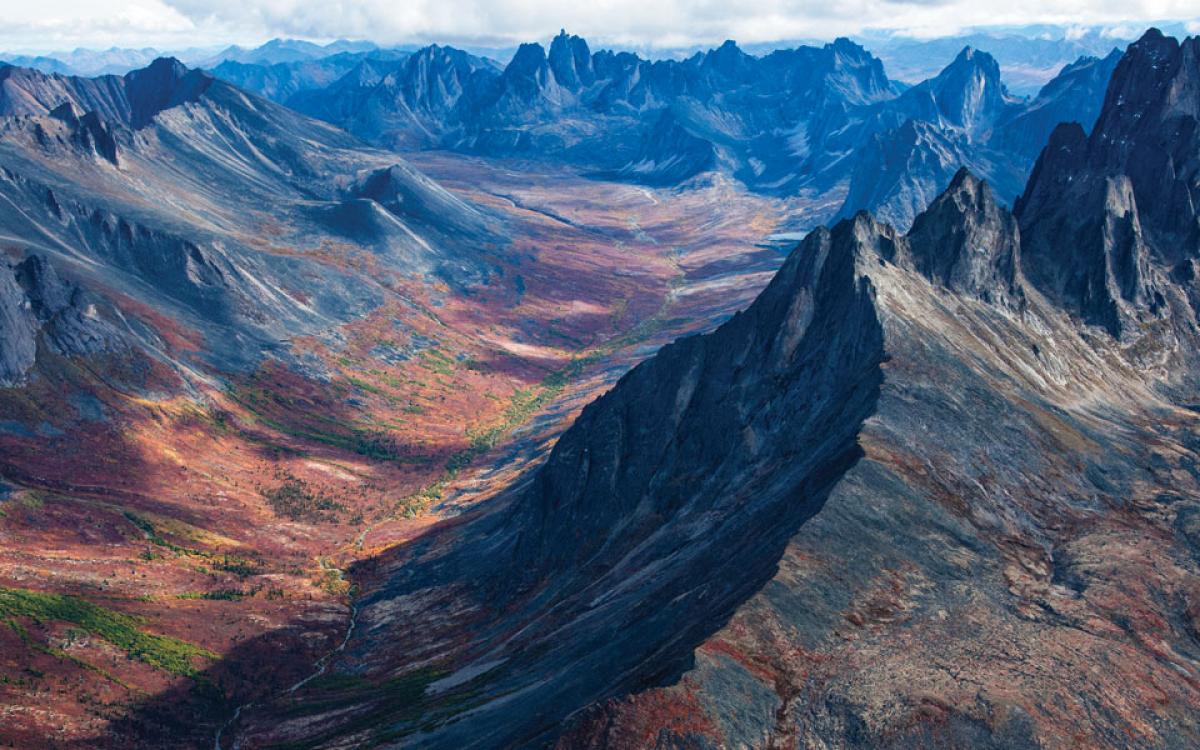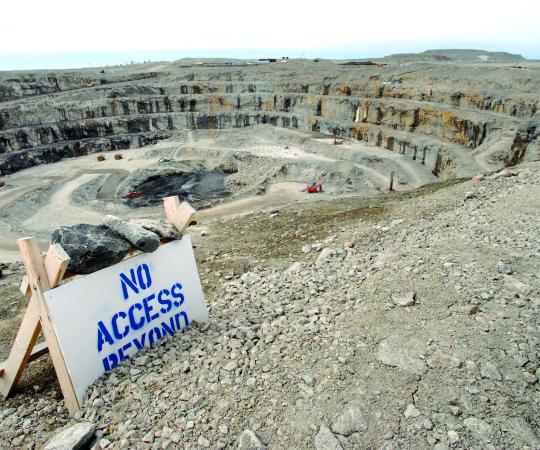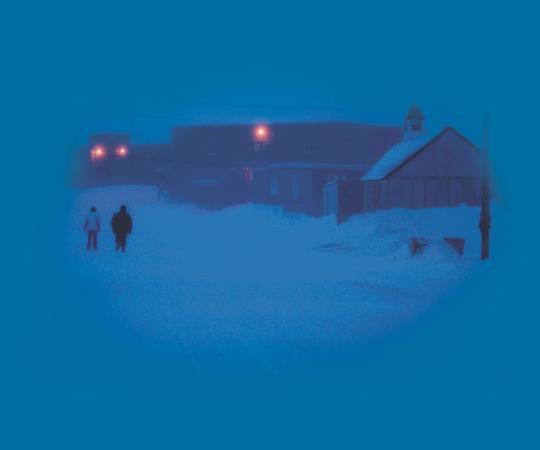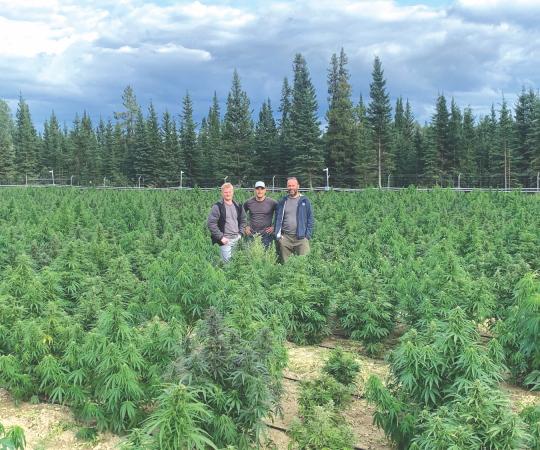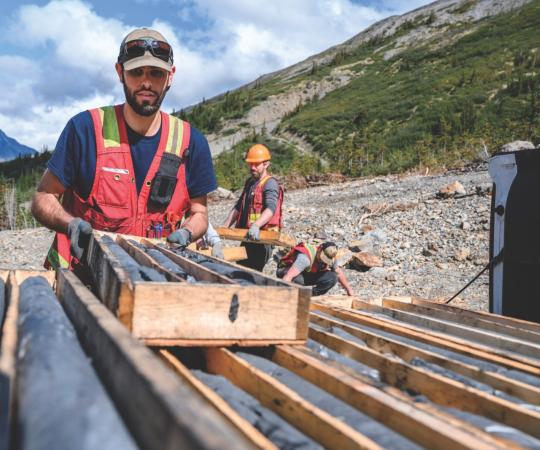It was a simple question: Is there an under-explored area in the territory that could be rich in minerals?
It turns out it was a naïve question, too. “Of course, the whole of the North—all three jurisdictions—falls into that category,” Scott Cairns, manager of mineral deposits and bedrock mapping with the NWT government, says with a chuckle.
There are good reasons for this. The obvious one is the sheer size of the North. But the lack of infrastructure and our long winters—with the associated ice- and snow-cover—makes much of the land inaccessible and impractical for detailed surveying and mapping.
That’s not to say the geology of the entire North remains a mystery. Where mineral development has already taken place or where discoveries have been made, exploration companies are building on data published by government geologists to better define and refine maps to understand what’s in and below the ground. “There are better explored areas, and places with less well-understood geology and mineral potential,” says Cairns, answering that simple-yet-naïve question. Here are three areas we don’t know much about today, but which geologists in each territory say might be host to future riches.

NWT: Interior Platform
The job of the geological survey in the North “is to find the haystacks,” says Scott Cairns. “And then when the haystacks are found, the companies can go in and find the needles.” It’s likely the Interior Platform in the NWT hosts its share of haystacks—and a few needles.
The Interior Platform is an extension of the Western Canada Sedimentary Basin, running north from Alberta and spanning east from the Mackenzie Mountains to the Canadian Shield at the North Arm of Great Slave Lake and up toward Great Bear Lake.
In Alberta, this basin is home to reservoirs of oil and natural gas. Same goes for the NWT, but there’s proof that it also hosts base metals. The biggest piece of evidence so far is the lead-zinc Pine Point mine that was in production for decades, spawned a town and developed lots of Northern infrastructure. “The lead-zinc at Pine Point is hosted in Devonian rocks and these extend right up pretty much to the [Arctic] coast, but they’re at considerable depth in much of that area,” says Cairns. The challenge for exploration companies is finding shallow (or near-surface) deposits. That’s because lead-zinc and iron ore are worth a fraction of, say, gold—an ounce of gold is worth nearly twice as much as a tonne of iron ore. So base metal mines are generally large-volume, open-pit operations due to the scale of production required to run a profit. “When the value of your metal is in the dollars a pound, then you can’t support huge deep shafts or anything like that to access it,” he says. “Your first order of exploration for these targets is looking for places where favourable rocks may occur close to the surface.”
There’s a lead-zinc deposit near Wrigley—“creatively named the Wrigley deposit,” Cairns says—which is a similar style to the Pine Point deposit. It’s been drilled and a mineral resource was released. There are other hints of lead and zinc minerals in drillholes from oil wells in the Sahtu.
Yukon: Mayo region
It’s been a busy couple of years in the Yukon, particularly south of Dawson City where major miners are busy buying up gold projects or partnering with junior mining companies. Carolyn Relf, director of the Yukon Geological Survey, says a less publicized area to the east could be just as exciting.
This region lies to the north of the Tintina Trench, a large fault that cuts the Yukon in two and is responsible for much of its mineral wealth. Mayo sits in this area, which appears on Yukon Geological Survey maps as a big beige blob. “In the Mayo region, the geology is very out-dated,” says Relf. “There’s a lot of detail in there that we just don’t understand.” The same rock types found in southeastern Yukon, where a couple of advanced gold exploration deposits are located, underlie much of the Mayo region. The Yukon Geological Survey hopes to set up a camp next summer and chip away at the beige blob, heading eastward to “see what sort of information we can tease out of the geology and hopefully provide a better context for what’s known about mineral occurrences there.”
When you have a big area that’s not very well known, Relf explains, exploration companies don’t know where to target their work. But if you understand what rock types are there, and what their relationships and structures are, “you don’t have to invest a lot of money or take a lot of risk,” she says. And that could draw even more activity to the Yukon in the future.
Right now, Goldstrike Resources—a Vancouver-based exploration company—is working a gold property in the area and global mining company Newmont recently became a partner. “The fact that Newmont is interested is quite exciting for us because it’s very much one of the frontier regions in Yukon where there hasn’t been a lot of gold discovered yet,” she says.

Nunavut: Qirniqtaaluk
Leading up to the creation of Nunavut, Inuit leaders hired geologists to tell them where the most mineral prospective areas were so they could include them as part of their future land claim. That work has paid off. Every mine in operation in Nunavut today—along with the majority of the territory’s advanced exploration projects—is located on parcels of land where Inuit own surface and subsurface rights.
One exception is Peregrine’s Chidliak diamond project on Baffin Island, halfway between Iqaluit and Pangnirtung. According to Linda Ham, chief geologist with the Canada-Nunavut Geoscience Office, that area was little explored and appeared on maps as a large mass of pink, which denotes granite rock. But Peregrine was curious and took a look at some Geological Survey of Canada assessment reports and sediment samples and found what appeared to be good indicator minerals for kimberlite—a diamond-bearing rock. “They put a few drillholes down over the area and intersected kimberlites,” she says. “People had no idea that kimberlites could be in that area at all.”
Ham says there really isn’t much “white space” left on the Nunavut map. “There’s no longer big, big areas that we don’t know what the rock type is underneath it.” But there are big swaths of land that are inadequately mapped, like the Chidliak area used to be.
One such area, Qirniqtaaluk, spans southward from Arctic Bay on northwestern Baffin Island to the Fury and Hecla Strait, adjacent Iglulik. “It’s a big area of all pink [on the map],” says Ham. “That’s telling us most of that area is all granite. But when you start looking at the aerial photos, we can see there are more rock types there. It’s not granite.”
Ham’s office began a six-week aeromagnetic and radiometric program flying over the southern portion of what they’re calling the Qirniqtaaluk region in August and they hope to fly the northern portion in 2018. Next summer, field teams will map the southern portion by taking rock and glacial till samples to determine rock types and mineral composition, along with fossil samples to learn more about the geological history. Field teams would map the northern portion in 2019.
The most promising area appears to be around the Fury and Hecla Strait. In the past, companies have sniffed around there and found uranium. “Is there anything besides uranium in this area? By producing a better, more detailed geological map, we just might find that there is something more there,” says Ham, adding kimberlite indicator materials have been found in the area. There’s also the potential for lead-zinc and gold deposits.

